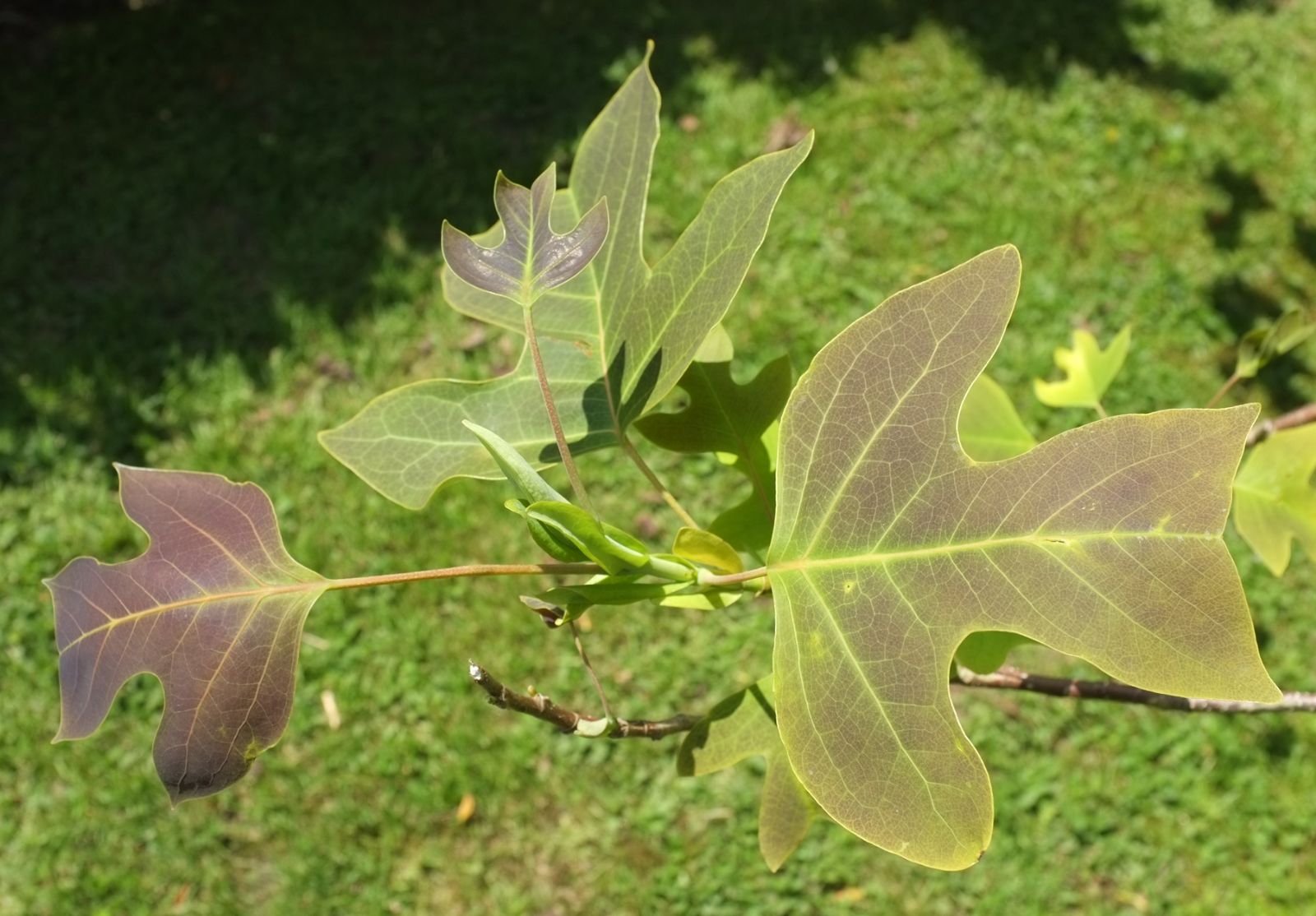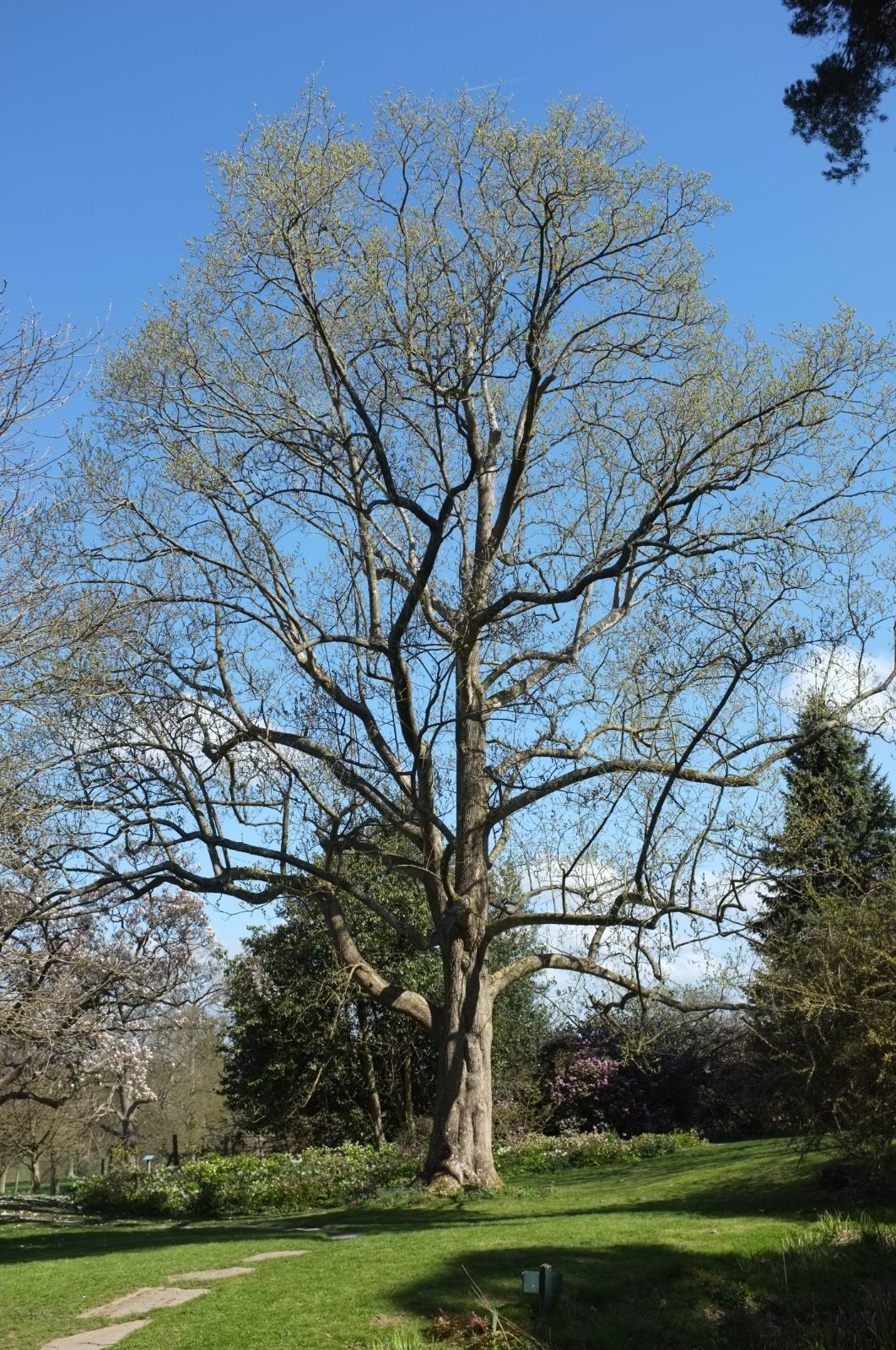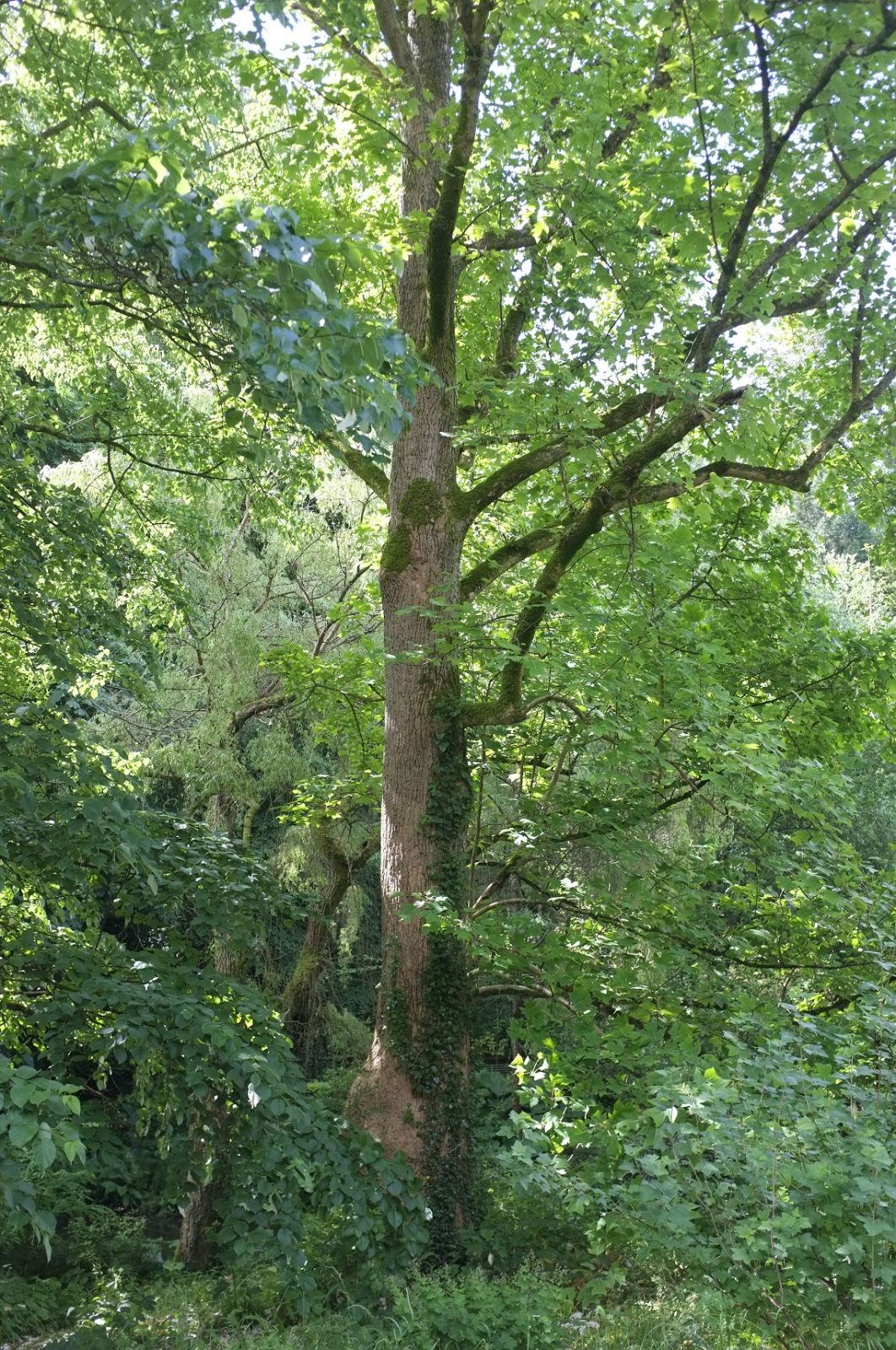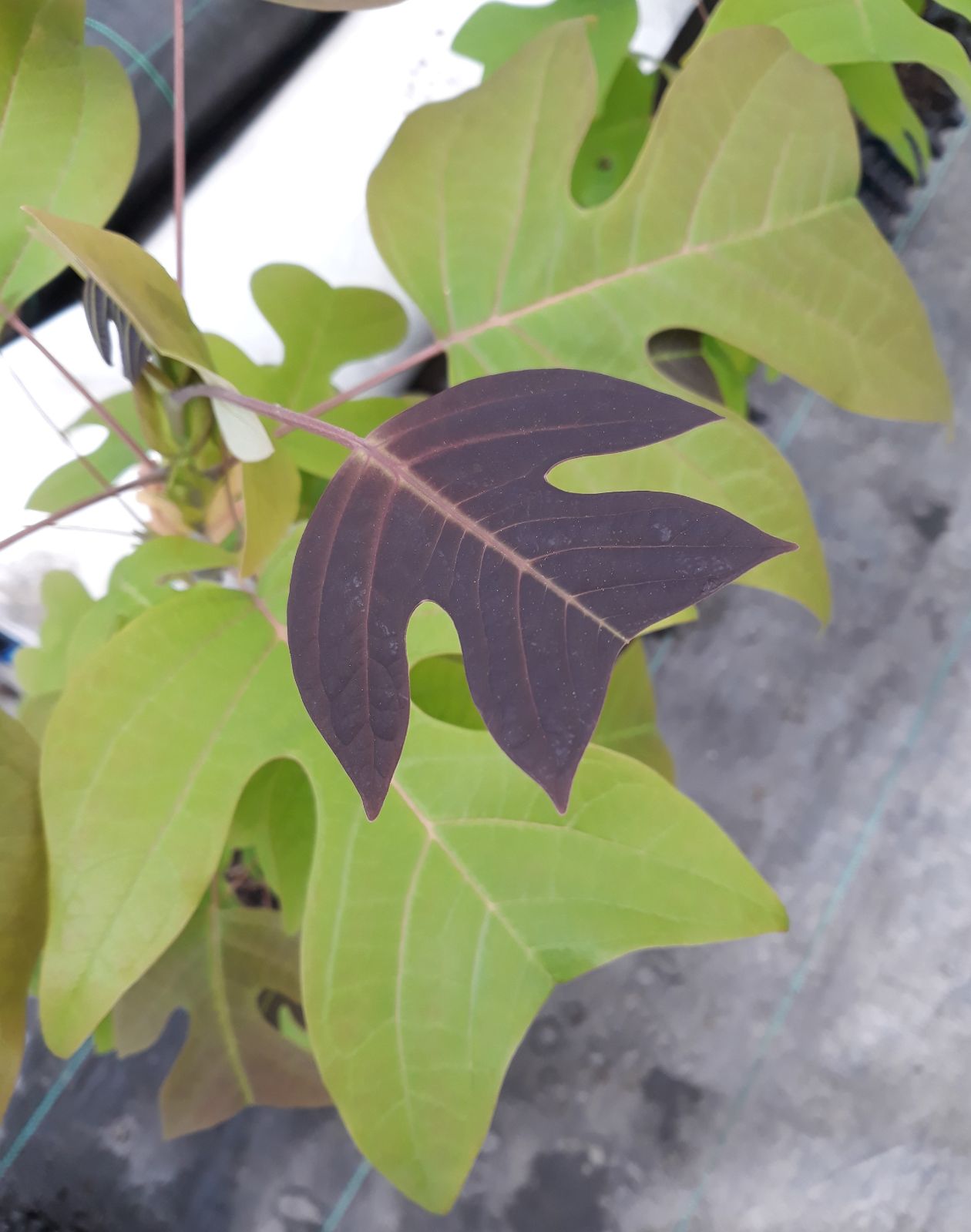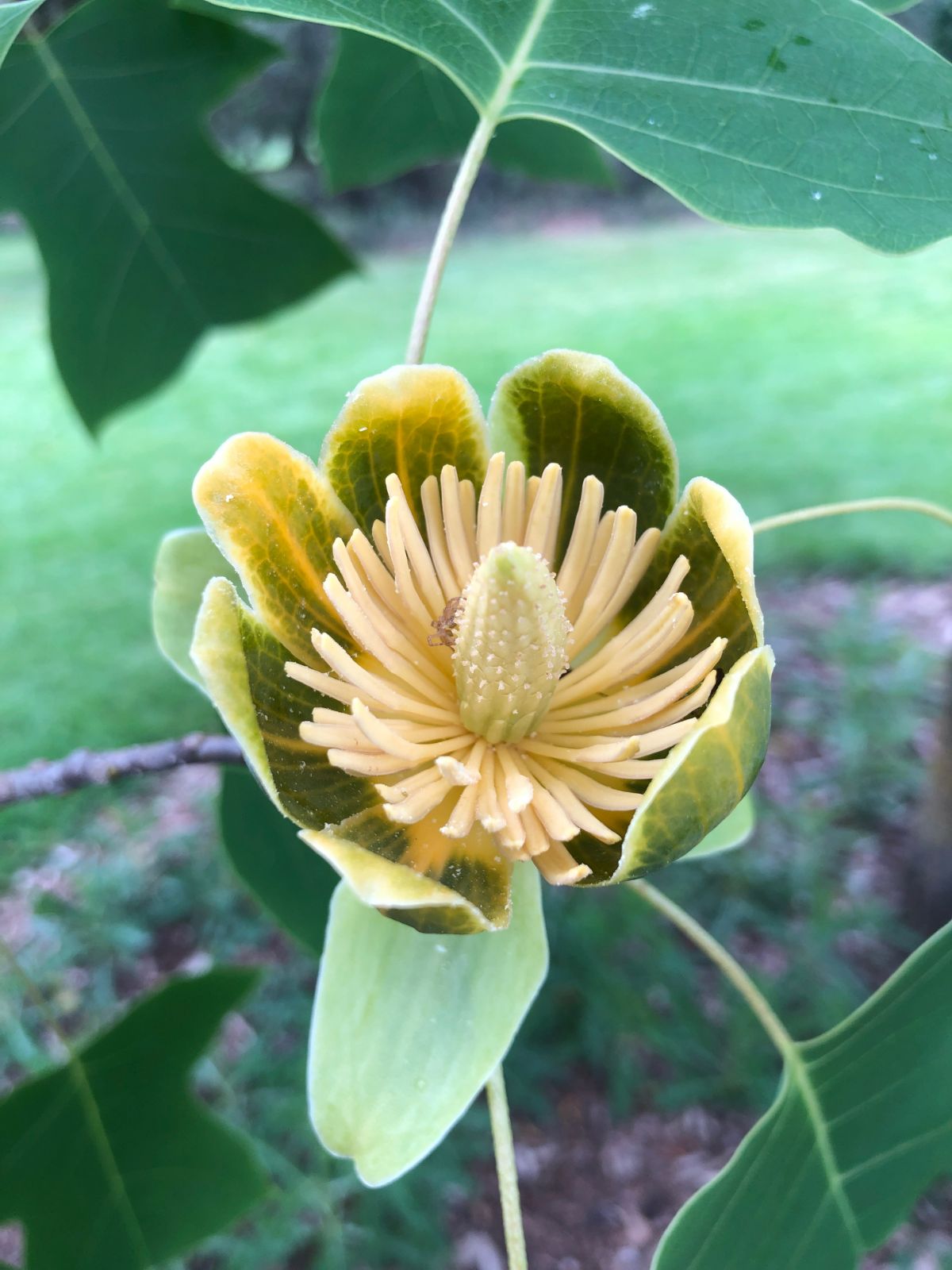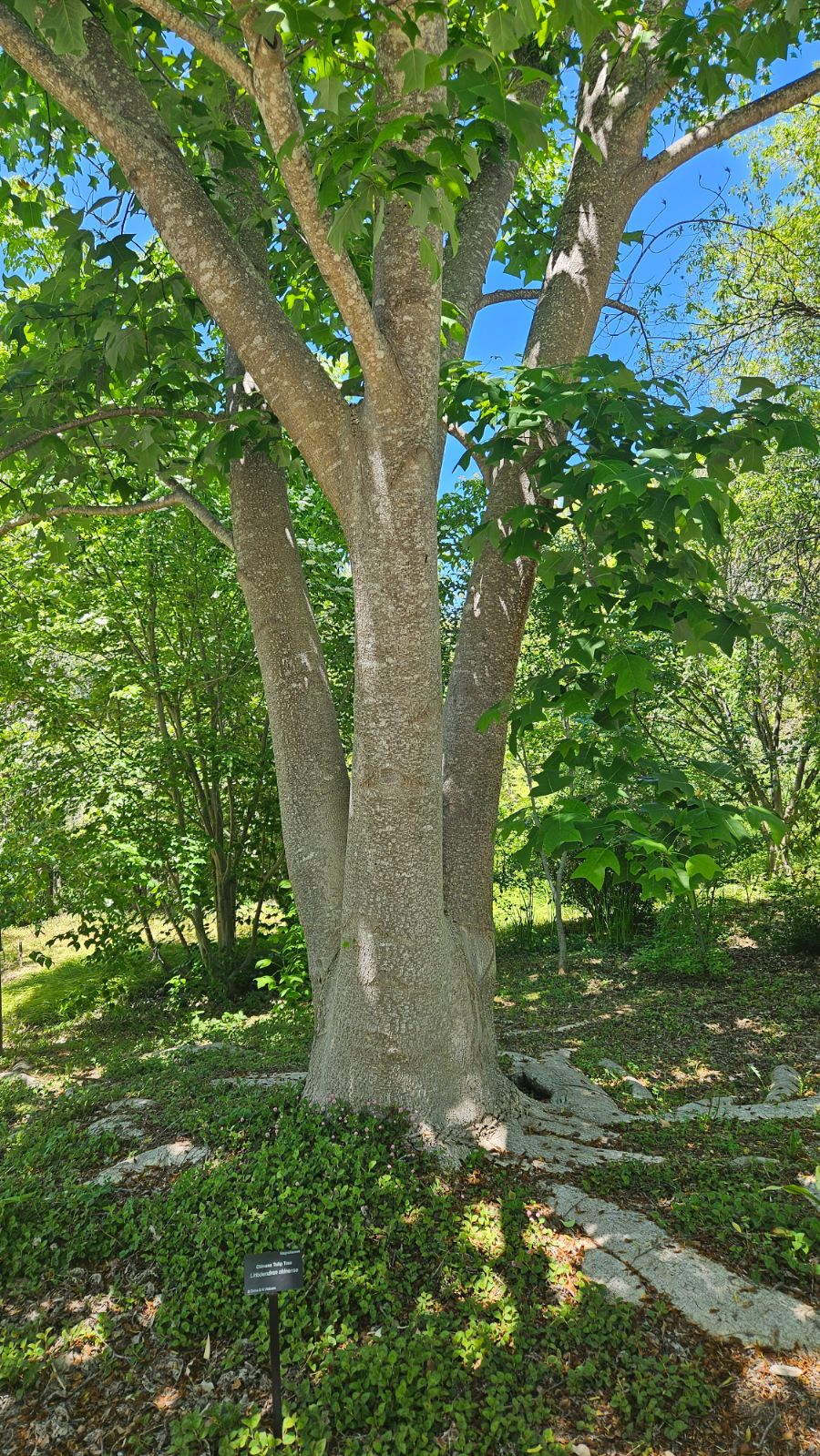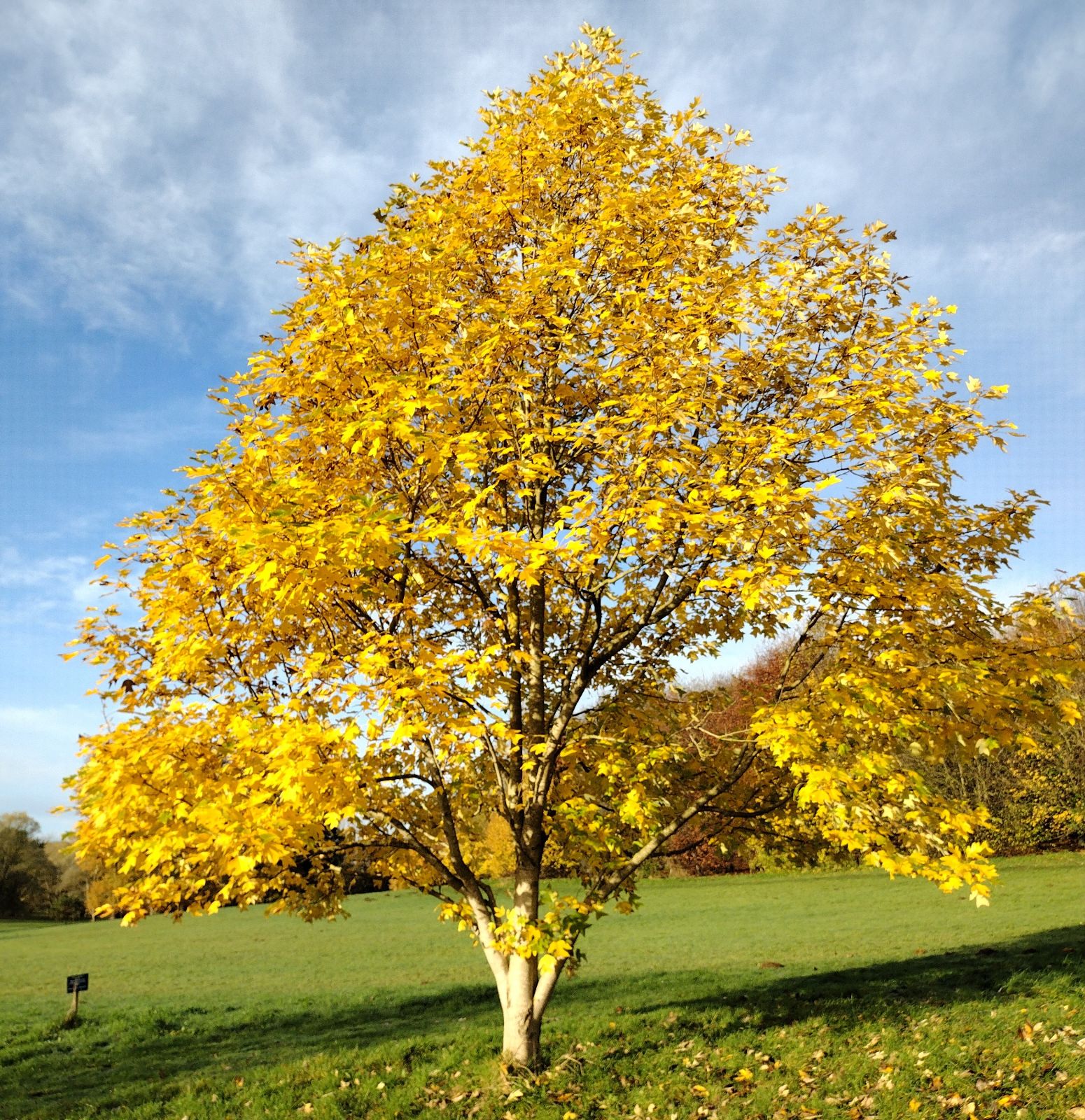Liriodendron chinense
Sponsor
Kindly sponsored by
The Samuel Storey Family Charitable Trust
Credits
Owen Johnson (2018)
Recommended citation
Johnson, O. (2018), 'Liriodendron chinense' from the website Trees and Shrubs Online (treesandshrubsonline.
Genus
Common Names
- Chinese Tulip Tree
- 鹅掌楸 (e zhang qiu)
Synonyms
- Liriodendron tulipifera var. chinense Hemsl.
Infraspecifics
Other taxa in genus
Tree to 40 m × 1 m dbh. Bark grey, fissured after about 30 years; browner irregularly scaling ridges in age. Crown usually taller than wide; trunk typically straight. Petiole 4–16 cm; leaves flushing briefly reddish-purple, 5–18 × 4–23 cm, nearly always with 1 pair of deep spreading lobes near the base; apex deeply lobed. Tepals to 4 cm, the inner 6 not overlapping, pale green with yellowish striations. Fruit 7–9 cm; nutlets ca. 6 mm, wing ca. 4 cm. (Xia et al. 2008).
Distribution China Anhui, Chongqing, Fujian, Guangxi, Guizhou, Hubei, Hunan, Jiangxi, Shaanxi, Sichuan, Yunnan, Zhejiang Vietnam (northern mountains)
Habitat Mixed montane forests, 900–1000 m.
USDA Hardiness Zone 5-6
RHS Hardiness Rating H5
Awards AGM
Conservation status Near threatened (NT)
The first westerner to observe the Chinese Tulip Tree was Dr George Shearer near Lushan in 1875 (Moore 1875). It was introduced by Ernest Wilson, on his first collecting trip for Veitch, from Hubei in 1901; the next introduction to the west may not have been until 1977 (from the Nanjing Botanical Garden to Kew) (Clarke 1988). It has since been collected on several occasions and seed has been made available from commercial sources, leading to comparatively widespread planting in at least the UK in recent years. The wild population has become badly fragmented through land clearance for agriculture, with small surviving groups of individuals exhibiting a wide genetic diversity but vulnerable to inbreeding (Parks et al. 1983).
The features distinguishing the Chinese from the familiar American Tulip Tree are subtle: the leaves carry deeper, longer-pointed lobes (a feature seen in coppice sprouts of L. tulipifera); the underleaf is slightly whiter; the flowers are smaller and greener; the habit tends to be more gracile and irregular, and in Britain at least, the bark tends to develop irregular and jaggedly-scaling ridges, like the flanges of a Brancusi bronze, at an earlier age. The most reliable feature for field identification probably lies in the anthocyanins that, as in so many Chinese trees from relatively low latitudes and high elevations, give a subtle purple flush to the expanding foliage, and trees that show particularly rich spring colours might be selected by the nursery trade. These foliage features combine to give an extra air of delicacy and elegance to the Chinese tree. In both species, the ‘tulips’ tend to have more curiosity value than ornamental impact, so that the more muted colours of the Chinese flowers are not really a drawback; there is even a special piquancy in the way their spring-green matches that of the foliage.
About 15 surviving examples are known in Britain and Ireland from the original Veitch introduction; marginally the largest, at Ashford Chace on a moderately alkaline Upper Greensand soil in Hampshire, was 29 m × 1.05 m dbh in 2018 (Tree Register 2018) – a growth rate slightly slower than that of the most vigorous American Tulip Trees. Only about ten established originals in Britain are known so far to have been lost to storms or disease, suggesting a long potential lifespan in Europe. The northernmost well measured examples are at Brockhole in Cumbria and Blagdon Hall in Northumberland (Tree Register 2018), so this tree probably does need reasonably long or warm summers to flourish. A deep, moisture-retentive soil is preferred – the one surviving original in Kew’s dry gravels is not a thriving tree, though there are numerous vigorous young specimens at both Kew and Wakehurst Place from SICH 1830 and SICH 2045 and in Tony Kirkham’s opinion it is a better choice for planting in the UK than L. tulipifera (J. Grimshaw pers. comm. 2018). Its tolerance to alkalinity needs confirmation: a young tree at Colesbourne Park, Gloucestershire, on oolitic limestone was persistently chlorotic (J. Grimshaw pers. comm. 2018). A thriving young tree of 16 m grows in the Arboretum Mlynany in Slovakia (monumentaltrees.com 2018); in America, it grows in collections north from Boston to Vancouver but is certainly rare.
'J.C. Raulston'
‘J.C. Raulston’ has recently been selected in North Carolina for its very large, dark leaves (20–35 cm in length) and extremely vigorous growth when young. A fine young tree grows at the JC Raulston Arboretum: it was planted in 2005 and by 2012 had achieved 9 m in height (JC Raulston Arboretum 2018). Its origin seems to be obscure.

